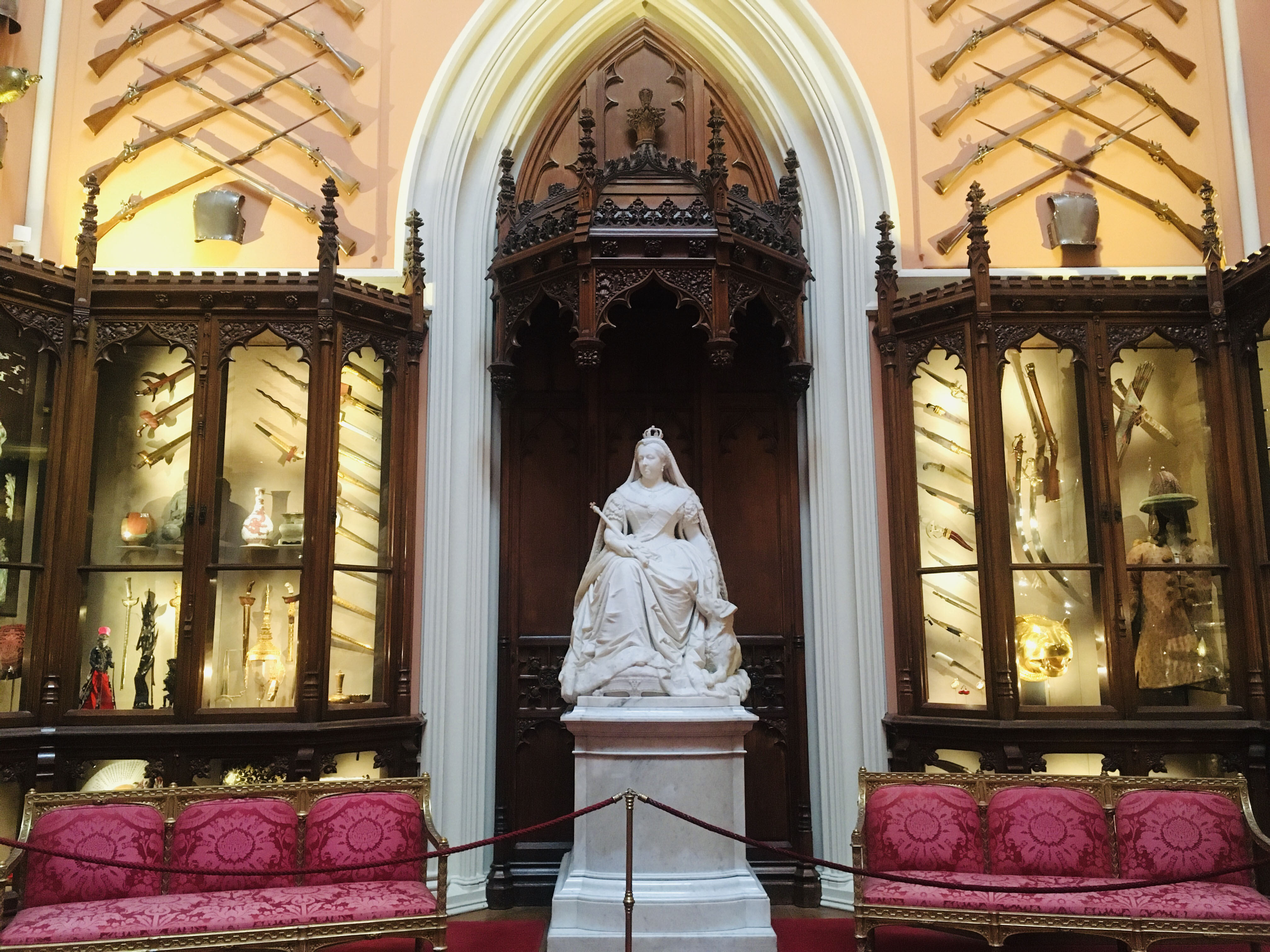
Grand Vestibule: The British Monarchy and the World
The Grand Vestibule at Windsor Castle reflects interaction between the monarchy and the wider world
PANAMANIAN
Breast plate
thirteenth centuryRCIN 49997
A pre-Colombian gold breast-plate, embossed with a primitive figure. In a green leather box, with gilt metal coat of arms and presentation inscription, lined with green velvet. The accompanying certificate states that the breast plate was found in the 'Choco' region (present-day Colombia) and is over 700 years old. Kate Jarvis, a British Museum curator of the Americas, confirmed that it is tumbaga work, a term for an alloy of gold and copper that was used in Pre-Columbian central America. Jarvis now believes that it could date from as early as AD 700. No information is available about where it was found, making the object difficult to date accurately.
Warwick Bray, a professor emeritus at University College London, has also authenticated the find. He says that similar items discovered in a grave near the Panama Canal date from AD 700-1000. Although described as a breastplate, Bray believes this piece is more likely to be a very large pendant which would have hung from a necklace. It would have been worn in life and then buried with the illustrious owner.
Warwick Bray, a professor emeritus at University College London, has also authenticated the find. He says that similar items discovered in a grave near the Panama Canal date from AD 700-1000. Although described as a breastplate, Bray believes this piece is more likely to be a very large pendant which would have hung from a necklace. It would have been worn in life and then buried with the illustrious owner.







